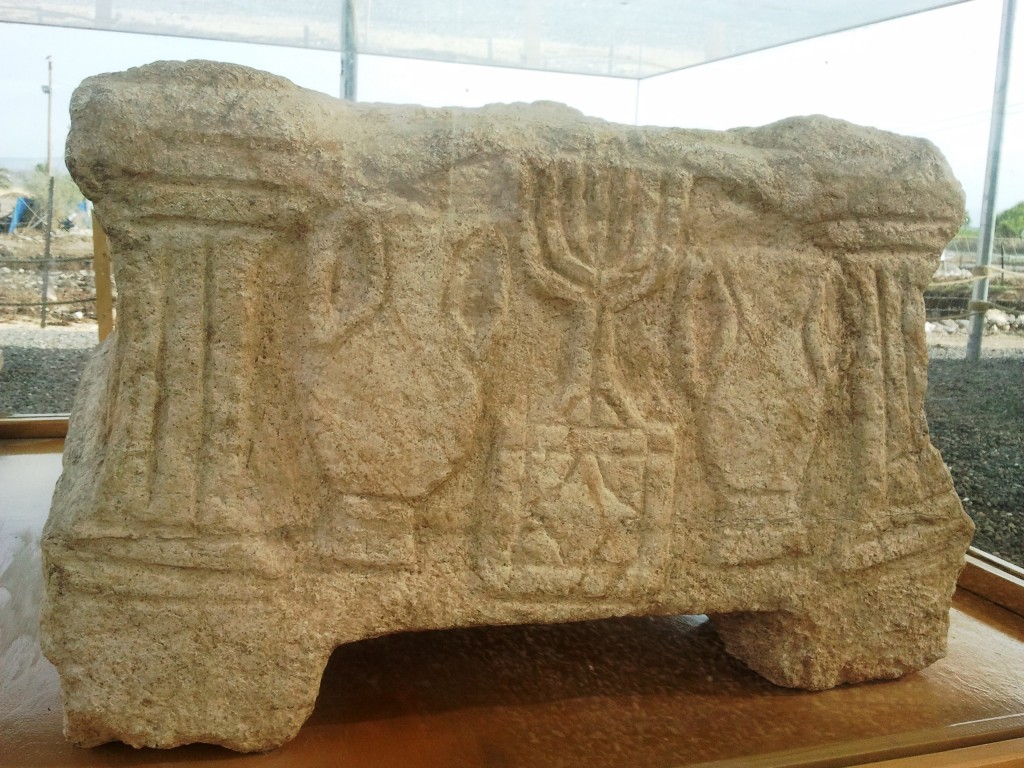It was discovered in 2009 near the Sea of Galilee, in an archaeological site that proved to be the hometown of Mary Magdalene, and in existence both before the Second Temple of Jerusalem was destroyed and during the life of Christ. As it continues to be studied, the stone is revealing more about the role of the temple and the synagogue in ancient Israel, reports The New York Times:
The [Magdala] stone is a kind of ancient snapshot.
And it is upending some long-held scholarly assumptions about ancient synagogues and their relationship with the Temple, a center of Jewish pilgrimage and considered the holiest place of worship for Jews, during a crucial period, when Judaism was on the cusp of the Christian era.
The stone was discovered in a first-century synagogue, along with a marketplace and fishermen’s quarters. At the time of discovery,
“I approached the stone, and I could not believe what I was seeing,” said Rina Talgam, a Hebrew University of Jerusalem professor specializing in ancient art of the Middle East. Israel Antiquities Authority archaeologists had asked her to visit the site to view Magdala’s mosaics and frescoes, but when she first saw the stone, “they said I stood there for three hours.”
Ms. Talgam concluded that she was looking at a three-dimensional depiction of the Temple of Herod, including its most sacred inner sanctum, known as the Holy of Holies.
As she and other scholars have continued to study the stone, it has continued to reveal more about the culture of the day, though Ms. Talgam expects and welcomes disagreement.
Experts have long believed that in the period before Herod’s Temple was destroyed in A.D. 70, synagogues were used as a general place of assembly and learning, something like a neighborhood community center. The more formal conception of a synagogue as a sacred space reserved for religious ritual was thought to have developed later, in the Jewish diaspora after the Temple had been destroyed.
But the Magdala Stone was found in the center of the old synagogue, and Ms. Talgam said it might have been intended to give the space an aura of holiness “like a lesser temple” even while Herod’s Temple still existed.
Other scholars have come to the same view. Elchanan Reiner, a retired professor of Jewish history at Tel Aviv University, said that the stone was probably intended to represent the place where God, or the holy spirit of God, was believed to reside and that its placement in the middle of the synagogue “gives new meaning to that public building.”
For Jews living in Galilee in those days, Jerusalem was a substantial journey away. Mr. Reiner noted that, though there could be only one Temple, the stone would have brought a suggestion of it to the synagogue in Magdala. “It brings that community closer to, and further from, Jerusalem at the same time,” he said.

